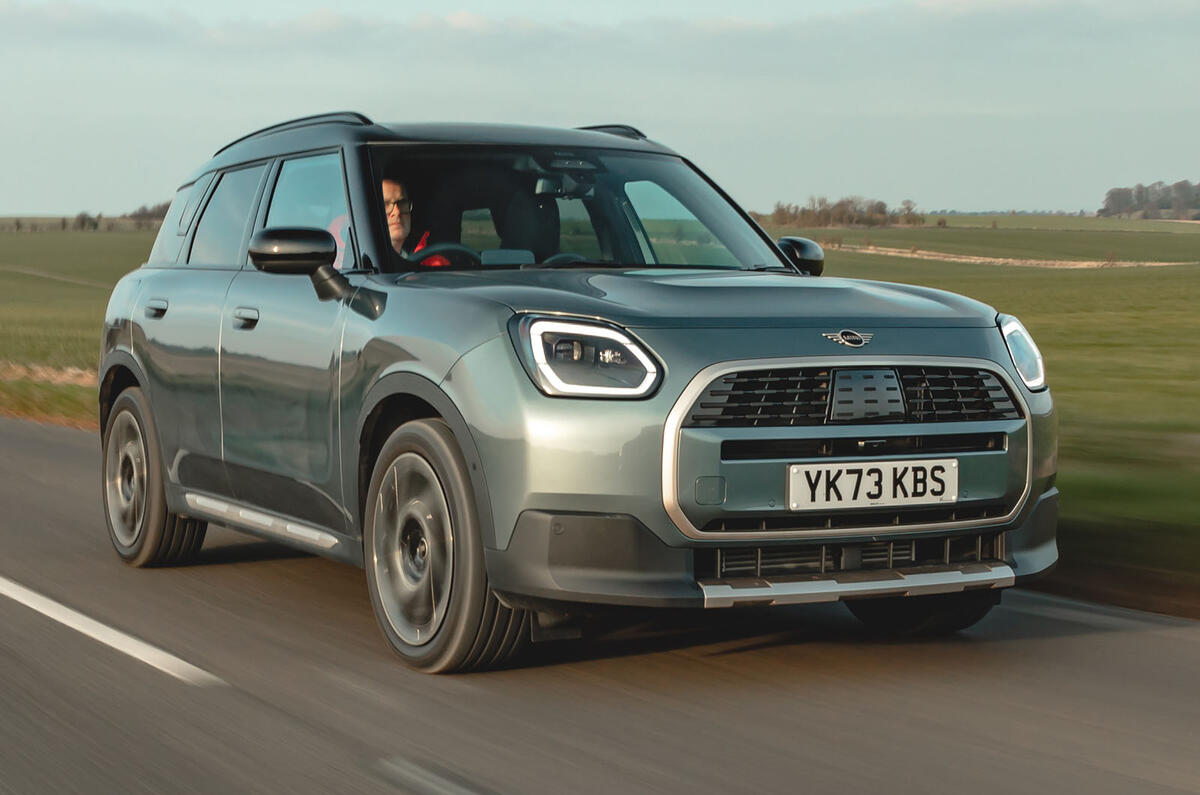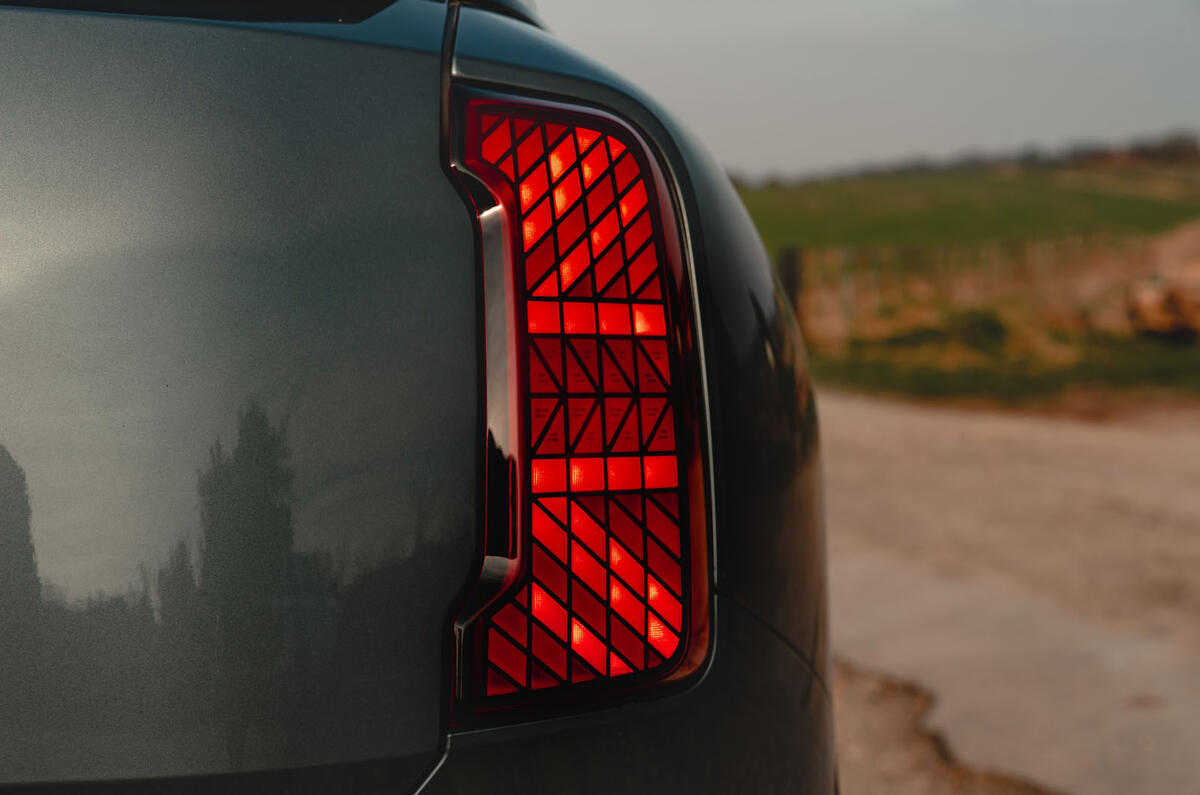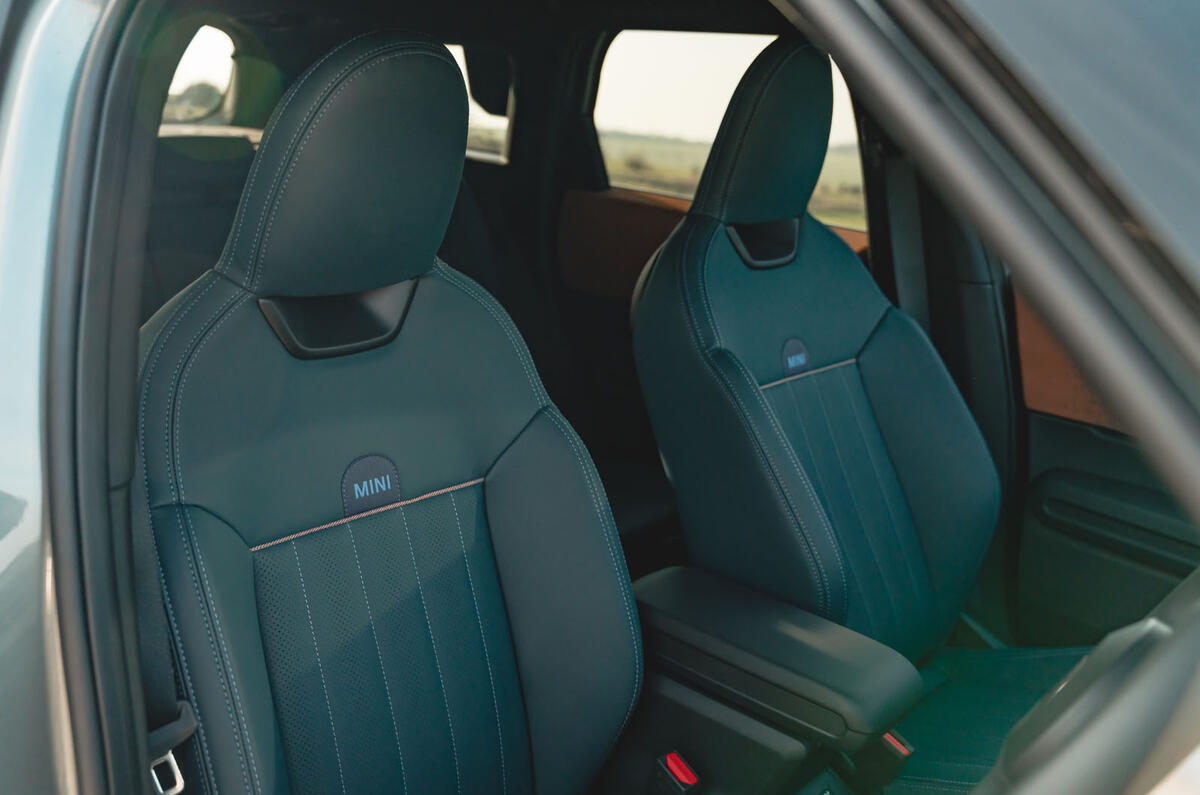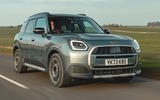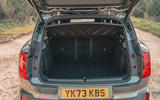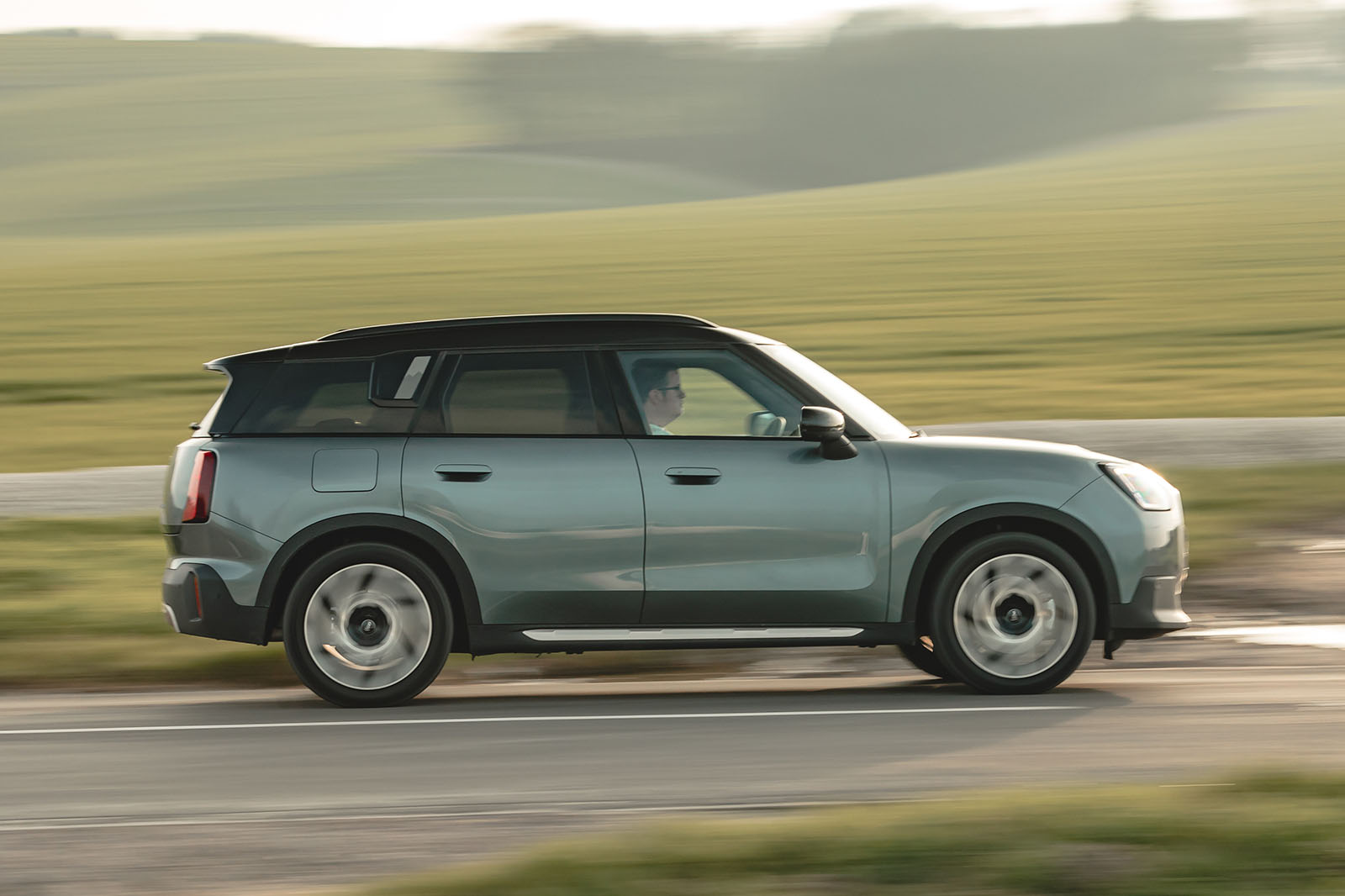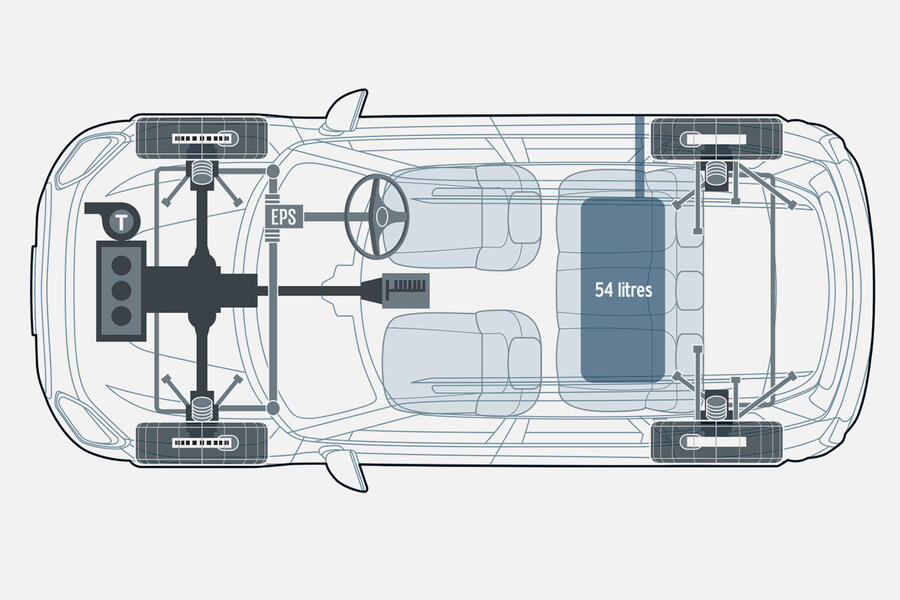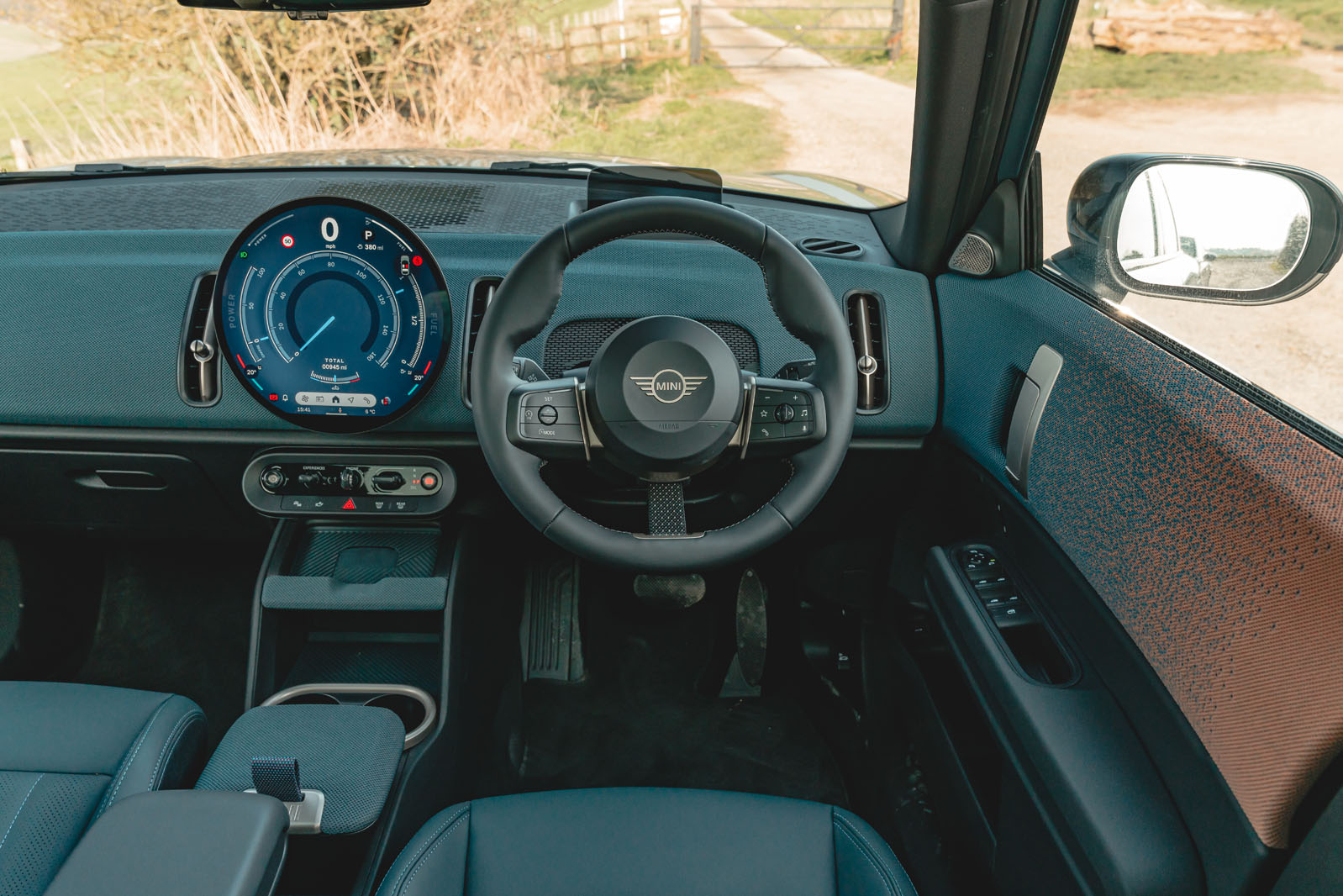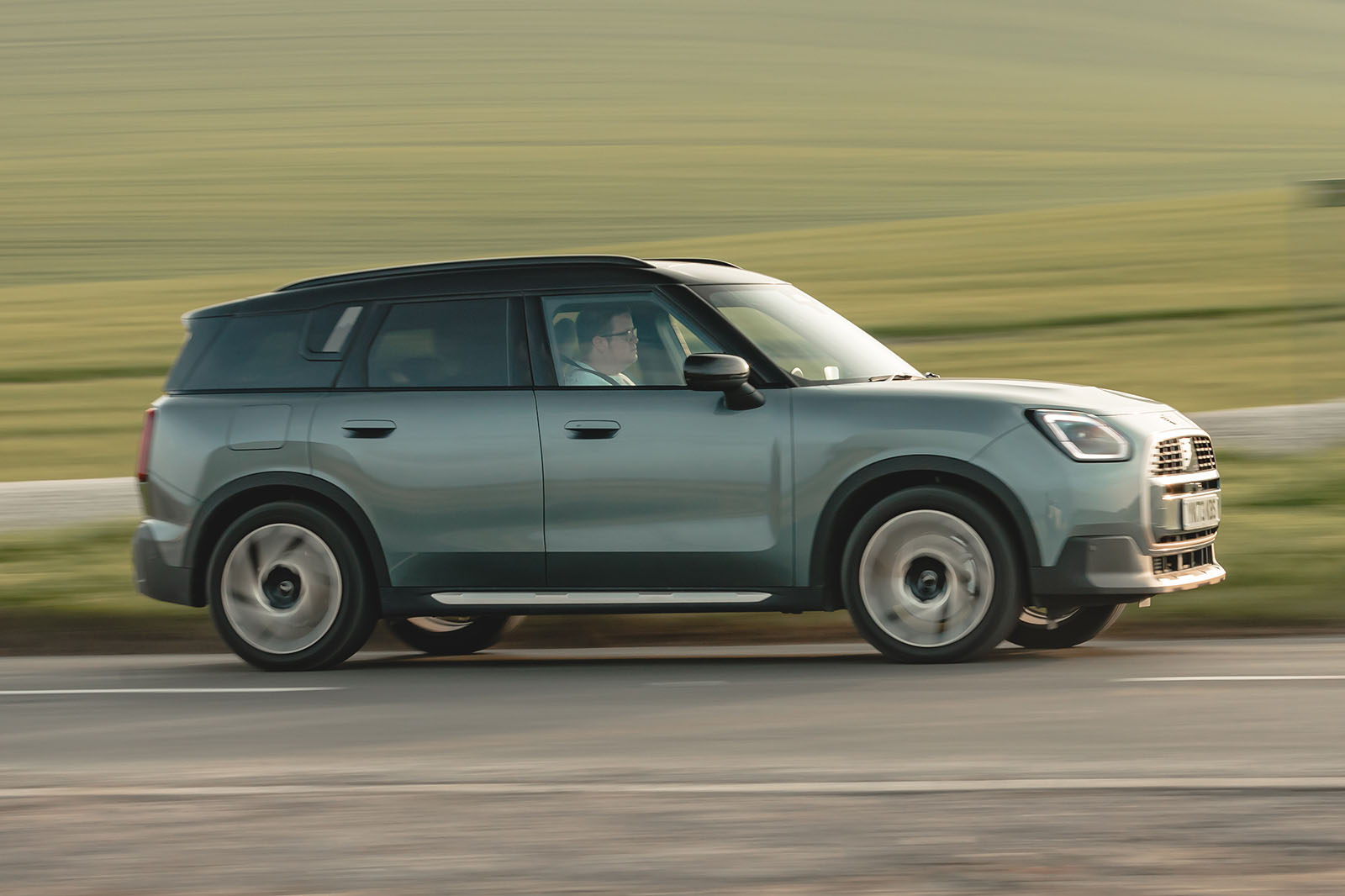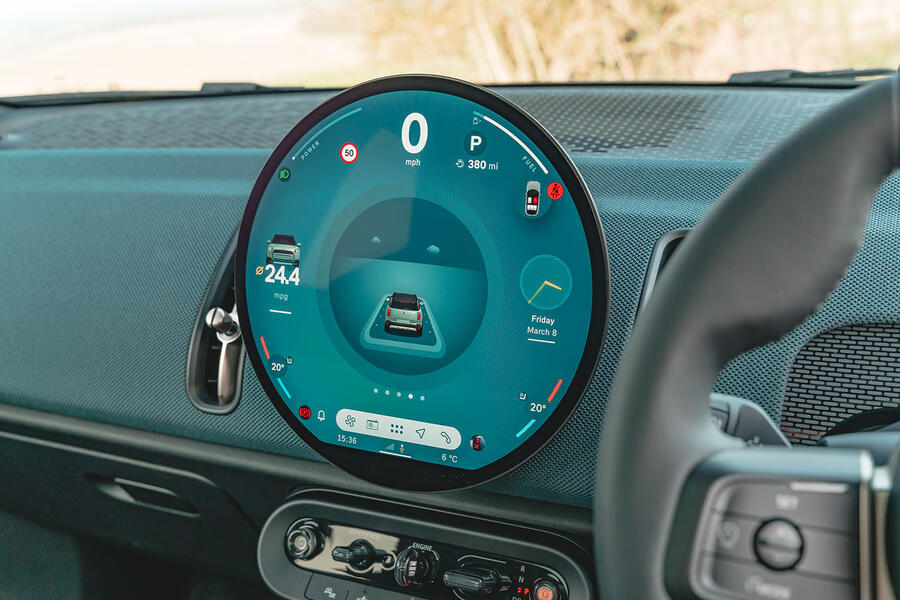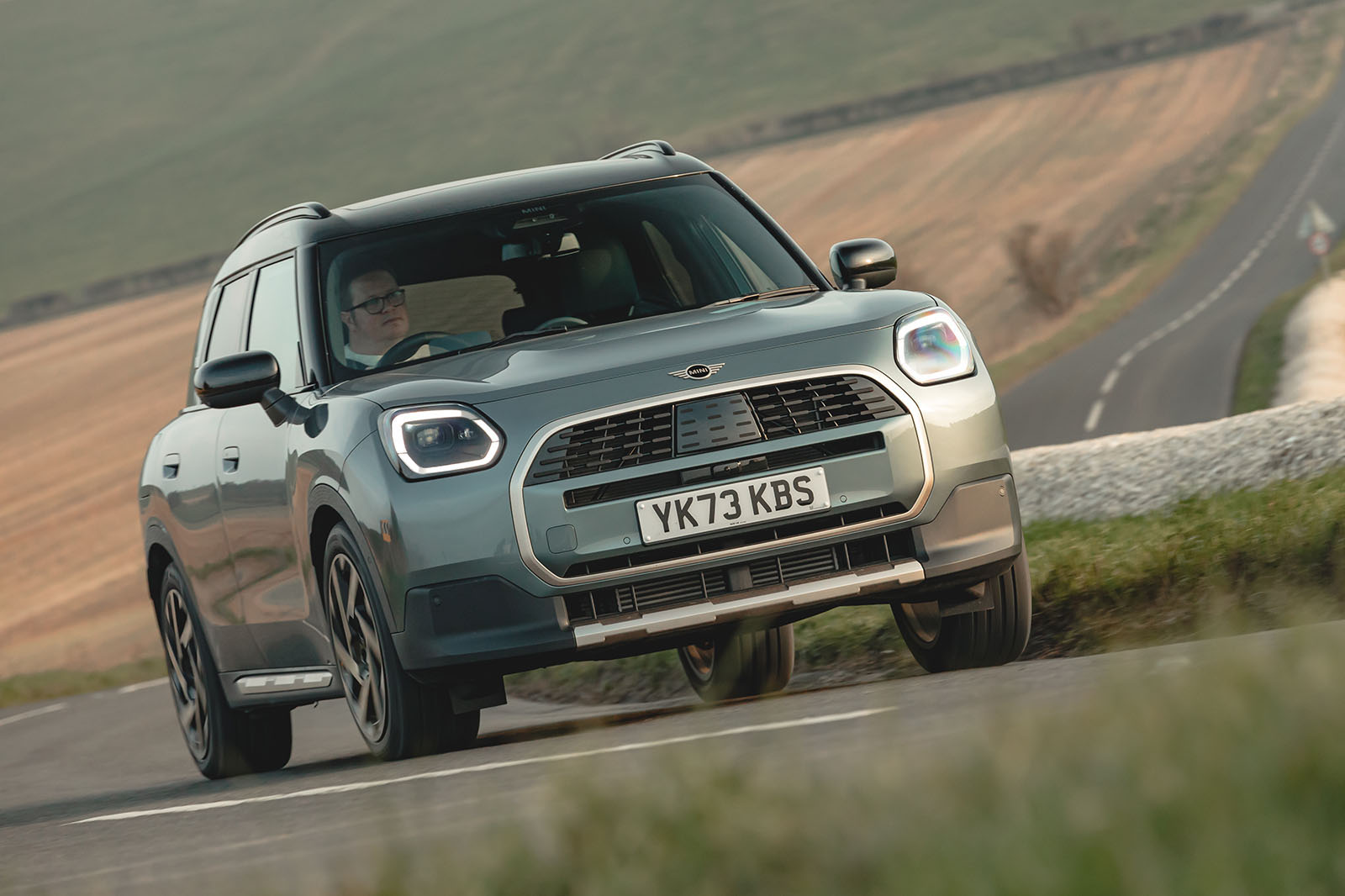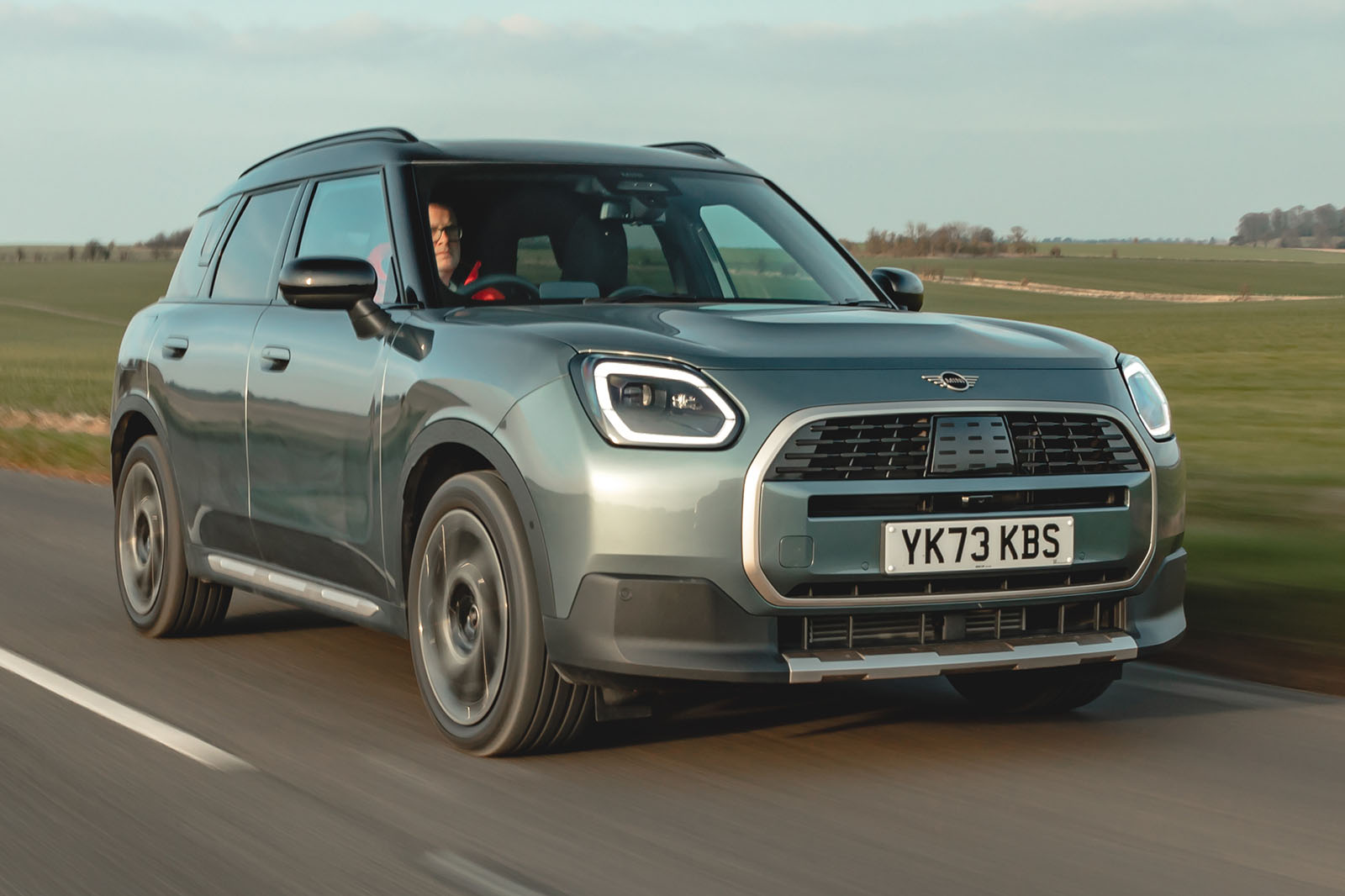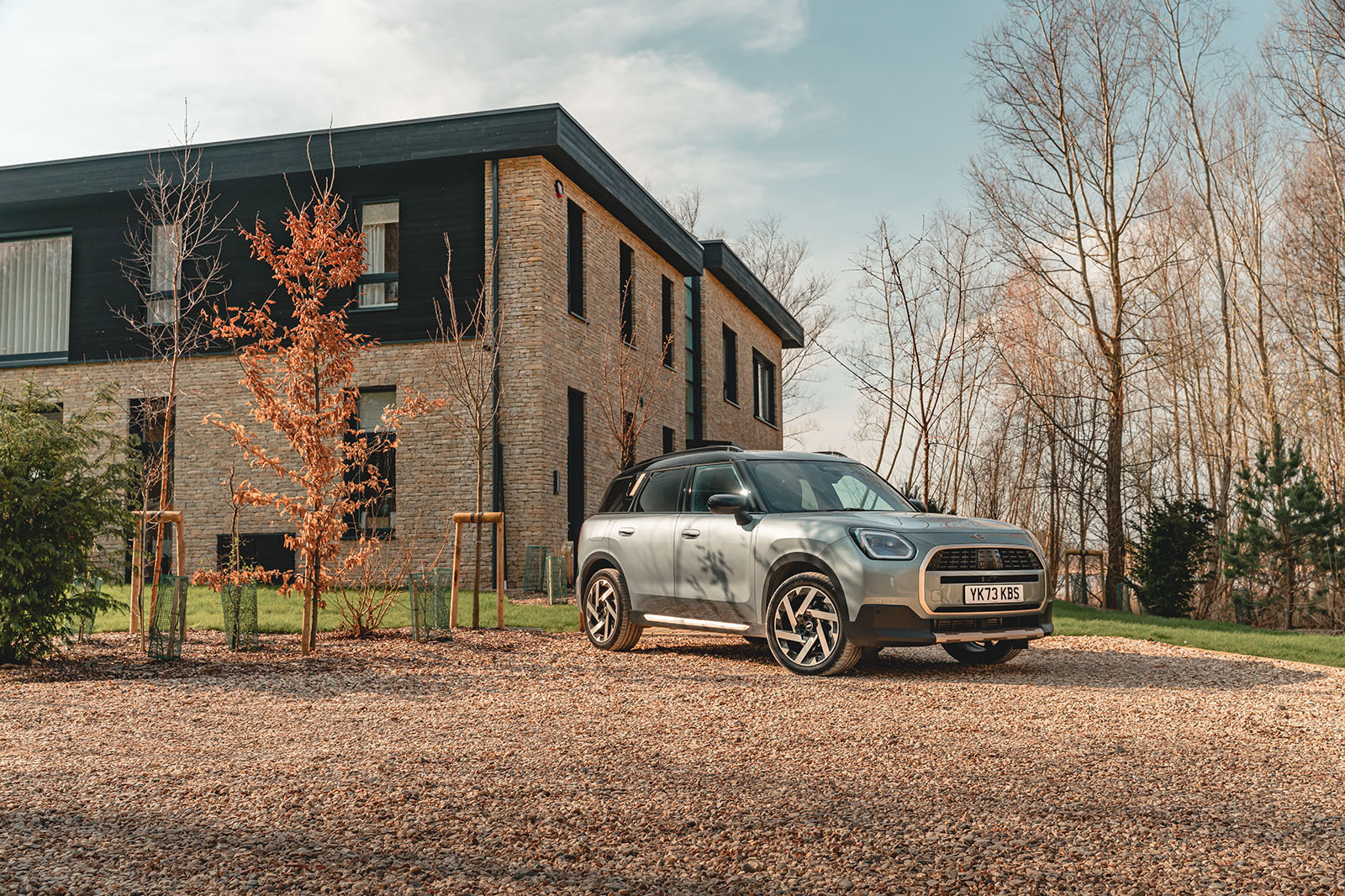Size isn’t the only compromise the Countryman has to make to mix it as a full-sized family car. Where Mini hatchback owners will be used to sitting lower at the controls, with their legs outstretched in front of them, the Countryman’s driving position feels notably more perched and bent-legged (to make space for second-row occupants). It’s not very ‘Mini’ ergonomically, then, but more evocatively so in other ways.
There’s a medium-sized steering wheel but no conventional driver’s instrument binnacle. Instead, both instrumentation and multimedia graphics are carried on a central, circular infotainment display that’s roughly the size of a dinner plate.
This is an OLED display, Mini proudly crows, brighter and more crisply rendered than it might otherwise be, and clearly a homage to the Smiths’ central speedo of Sir Alec Issigonis’s original Mini. It’s much larger than the original Mini’s instrument, though, at 240mm across; it can be interacted with only via the touchscreen or voice command, rather than by a physical cursor controller; and it has some particularly bright, stylised display modes that can adversely affect your night vision.
If you want only instrumentation from it (rather than sat-nav mapping etc), you can tap the upper display portion to enlarge it into a set of full-screen digital dials. Also, unlike in a Tesla Model 3 or Volvo EX30, Mini does offer a head-up display, which places at least some useful instrumentation information close to your natural line of sight, so you don’t have to look away from the road quite so often. In our view, though, this ought to be a standard-fit item, not an option, since it makes a significant contribution to ease of operation.
Elsewhere around the cabin, Mini does a very creditable job of conjuring a clear sense of material richness and style, with an original touch. The Countryman’s designers preferred recycled knitted textiles to expensive mouldings on the upper dashboard, which do look appealing and alternative.
Second-row space is fully adult-appropriate, although the moulded plastic upper seatbacks (there for carrying tablet-holder accessories, we suspect) are a bit of an eyesore for those behind them.
Boot space is accessed via a near-vertical hatchback, and although the boot is a little shallow, its 450-litre capacity is usefully practical, albeit not quite on a par with that of cars such as the X1 or Mazda CX-5.
Multimedia
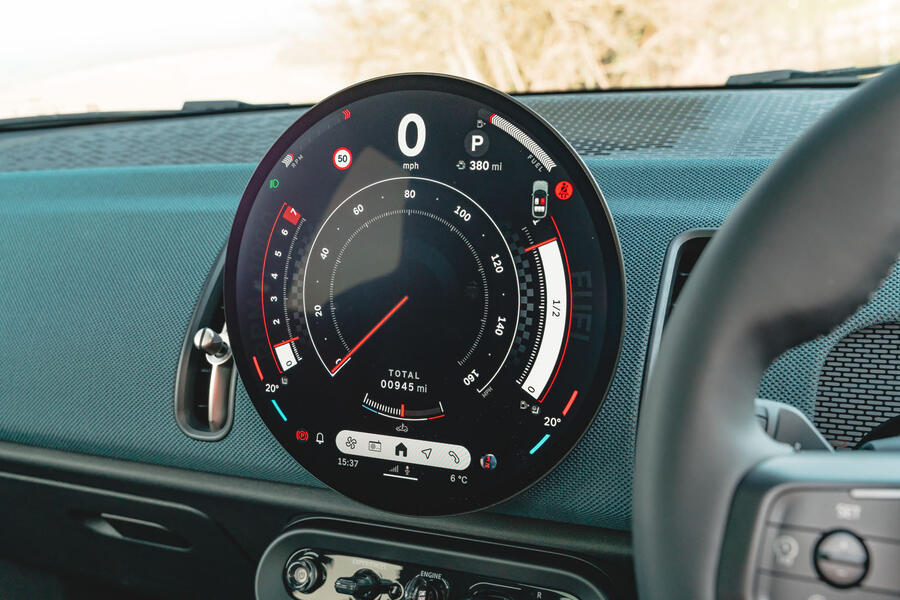
The Countryman is the first Mini to use the latest Operating System 9 infotainment system, which has been based on Android software so it supposedly feels like a smartphone (famously, those things you’re not allowed to operate while driving) to use.
Its circular 240mm screen is lit almost to its edge and has the job of an instrument binnacle to do as well as everything else (touch the upper portion and the instruments expand to fill the whole display) – which, in our book, is a bit too much.
It’s reasonably easy to navigate, thanks to a well-structured home screen and a useful range of shortcuts, but we’d much prefer a physical cursor controller, to make it less distracting.
OLED display technology makes it particularly bright and clear – sometimes (at night especially) a bit problematically so.
Extended networked functionality for the navigation system and a full selection of Android-based apps, with gaming options, can be added via a Mini Connected subscription package from £15 per year.



